Coat for a Coachman
Norah Worthington, Fashion Archives Intern, Summer, 2018

Green Livery Coat detail, c. 1870s, wool, brass, cotton, Maryland Historical Society, Gift of Mr. and Mrs. John Ridgley. 1944.76.27
I knew the symbol in an instant: a stag’s head. I had seen it before on gilt curtain tiebacks and china, on stained glass windows above the impressive double doors to the Great Hall, and on the enormous pier mirrors that reflect endlessly on each other in the red furnished parlor of the Ridgley family. In my work at Hampton National Historic Site, I had challenged children to count all the stags in the Great Hall. The crest of the Ridgely family manifests itself in nearly countless ways when you visit the site. They seemed to put it on everything.
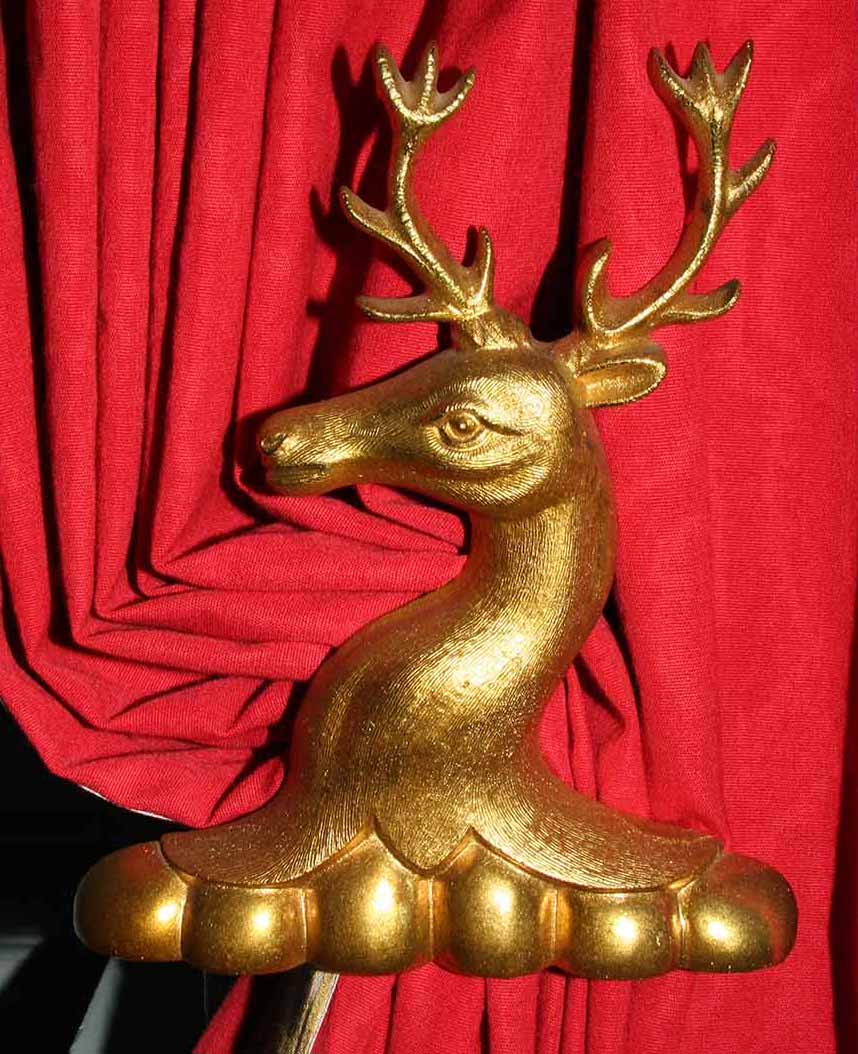
Gilt Stag’s Head Curtain Tie-back, 1845 ,pictured in Hampton National Historic Site by Ann Milkovich McKee, on behalf of Hampton National Historic Site. Charleston SC: Arcadia Publishing, 2007.
This time it was on two rows of brass buttons running down the front of a dark green wool coat with cream piping and fancy pocket flaps. I unpacked the box to discover a second coat with similar buttons and a four layer wool cape that attached to the neck of a coat with buttons. These coats and cape were uniforms called “livery” worn by servants of the Ridgely family. Like the English nobility they aspired to emulate, the Ridgley family of Maryland saw themselves as living a genteel life of manners in the country with well-dressed servants that visually showcased the family’s wealth and sophistication.
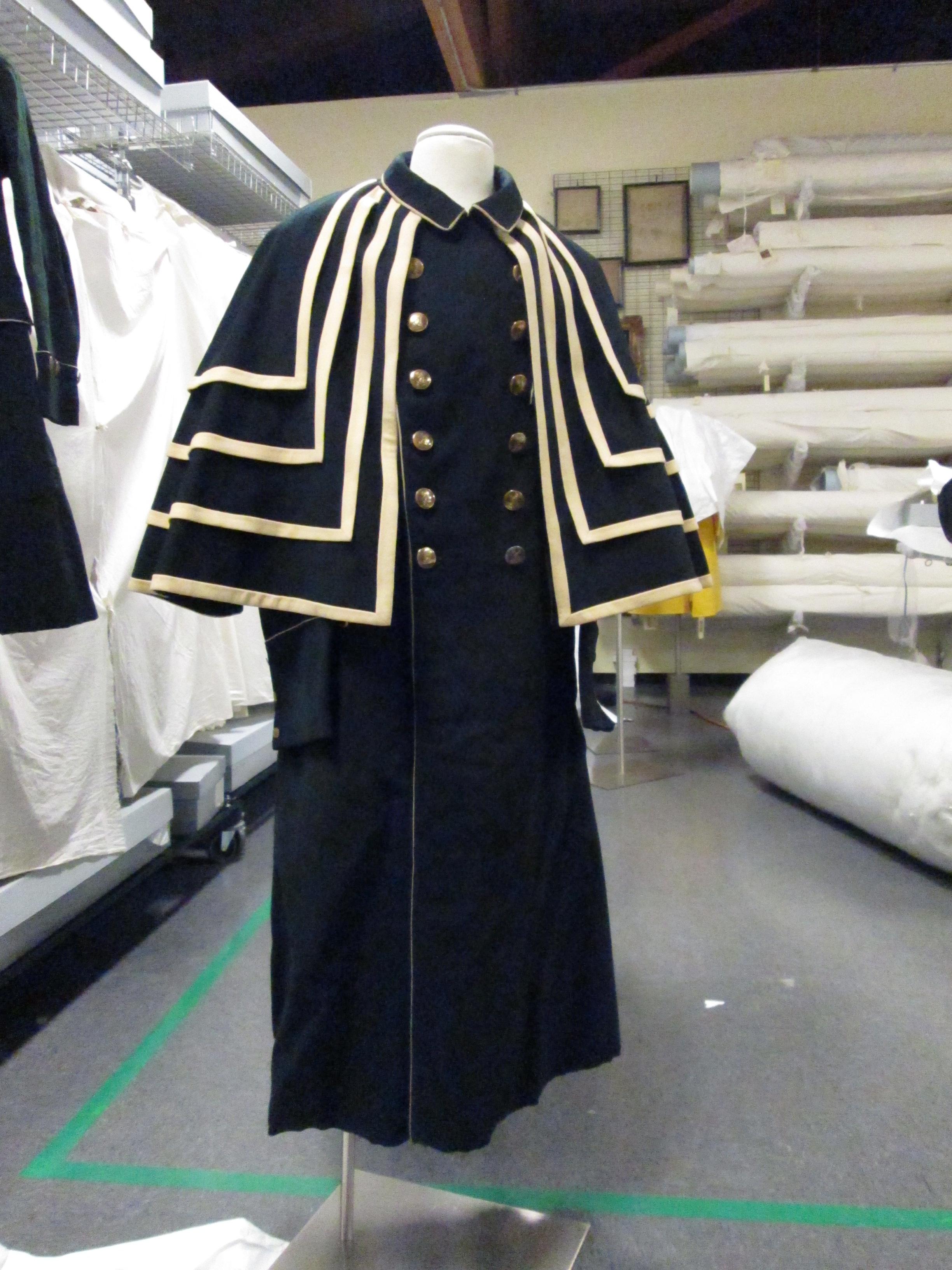
Long Livery Coat and Cape, 1888, wool, cotton, brass, Maryland Historical Society, Gift of Mr. and Mrs. John Ridgley 1944.76.26 (coat), 1944.76.28 (cape)
The longer of the two coats is labeled “Tilghman Davis 1888”, and the cape is labeled “Tom Brown 1888.” The unlabeled coat seems to be of an earlier style, finer quality, and with more tailoring. It is possible this coat represents the antebellum period since after slavery’s abolishment, it became very hard to keep up such a large estate. The cape and long coat are of the same fabrics, but the cape doesn’t quite match up to the buttons on the long coat. It is likely there was a matching coat for Tom and a second cape for Tilghman. The cape is characteristic of a coachman’s cape, also known as a carrick cape. It would have looked quite impressive when worn with the beaver fur top hat with gold braid that accompanied the donation, especially driving the Ridgely carriage that had the family crest painted on the side. You can still see the coach on display in the barn at the Hampton site in Towson.
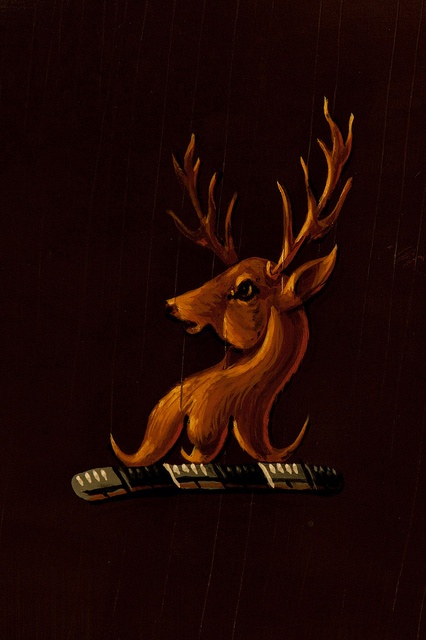
Stag painting on the side of the Ridgley carriage on display at Hampton National Historic Site, photo courtesy of Tim Ervin

Coachman’s Hat, 1888, beaver fur, leather, Maryland Historical Society, Gift of Mr. and Mrs. John Ridgley 1944.76.30
Actually, Maryland Historical Society owns many items from the Ridgely family. As John Ridgely turned over the grand estate to the National Historic Trust for preservation in the late 1940s, there were some items that landed here instead. When the daughters of the family passed away in the 1950’s, some of the loveliest gowns and finest furniture joined MdHS’s collection. One favorite item in the Ridgely collection is a spectacular blue watered silk visiting dress from the early 1870’s belonged to Margaretta Sophia Howard Ridgely, a mistress of the property until 1904. The dress is a stunning blue with ornate corded trim in fantastic scrolls and patterns working their way up the front of the princess line. There is blog post about the dress and Margaretta from a previous fashion intern:
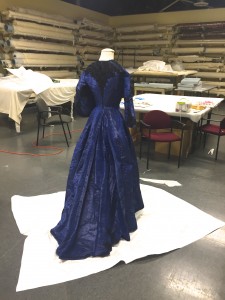
Blue Silk Dress, c. 1870’s, Maryland Historical Society, Gift of Mr. and Mrs. John Ridgley,Jr. 1956.15.47 http://blog.mdhs.org/costumes/m.s.-ridgely-and-the-blue-dress
While Margaretta Sophia Ridgely is well known, you won’t find an instant hit if you search for the names we found inside the livery.
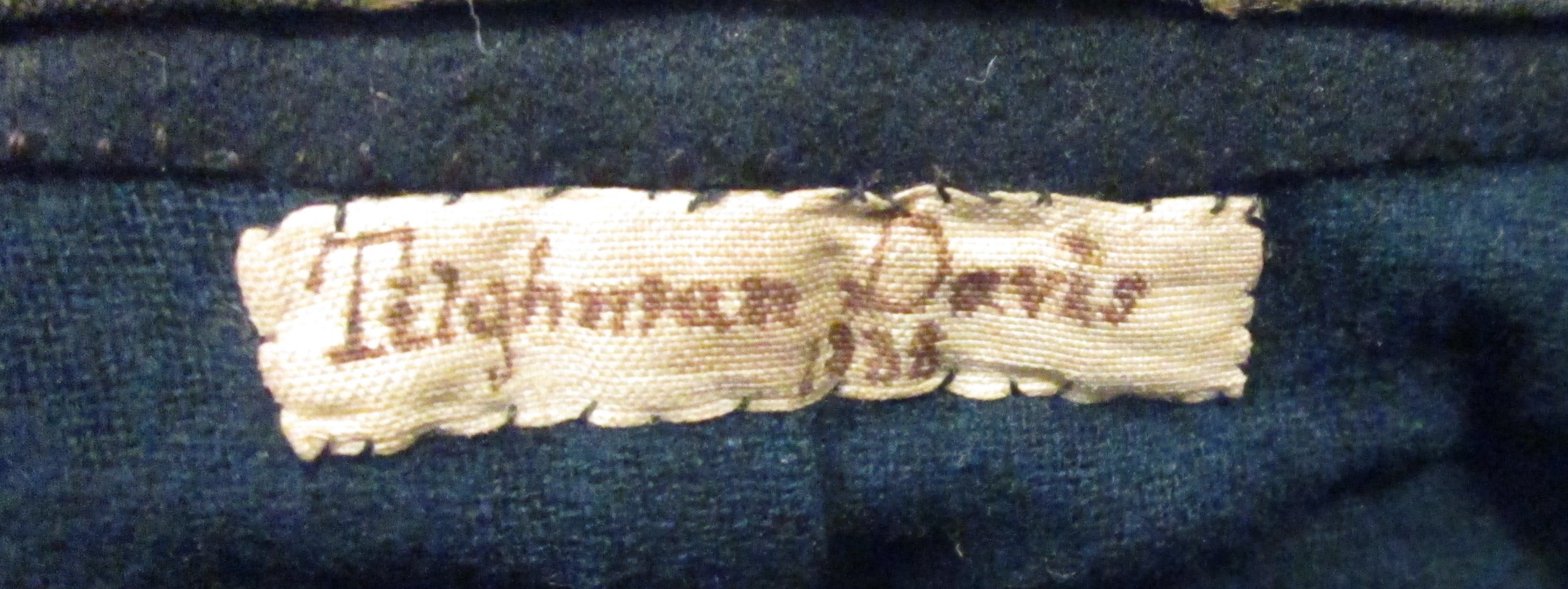
Label in Long Livery Coat, 1888, wool, cotton, brass, Maryland Historical Society, Gift of Mr. and Mrs. John Ridgley,Jr. 1944.76.26
You can catch glimpses of them hidden in the documents of the Ridgley family. They are mentioned in the memoir of James McHenry Howard, Margaretta’s brother, which includes a section on “Old Family Servants.”[1] James wrote that Tilghman was the son of servant Bill Davis, “one of the best negroes ever on the place.” He later reflected that “Thomas Brown has been one of the waiters at Hampton nearly ever since the close of the war. His father William Brown used to be my father’s coachman when we lived at Cowpens, Tom is a good, honest, and industrious man a takes much interest in the welfare of the family.”
Throughout the 1850’s and 1860’s, they appear in the Hampton Farm Account Book as enslaved men receiving clothing twice a year.

Maryland Historical Society, MS 691 Hampton Farm Account Book
There is even an 1872 receipt in the MdHS collection for service to livery coats for these two men. Elsewhere on the receipt are new livery coats for other servants. Each new coat and cape together cost $110, or about 207 days work for one of the Ridgley’s hired hands at the same time.
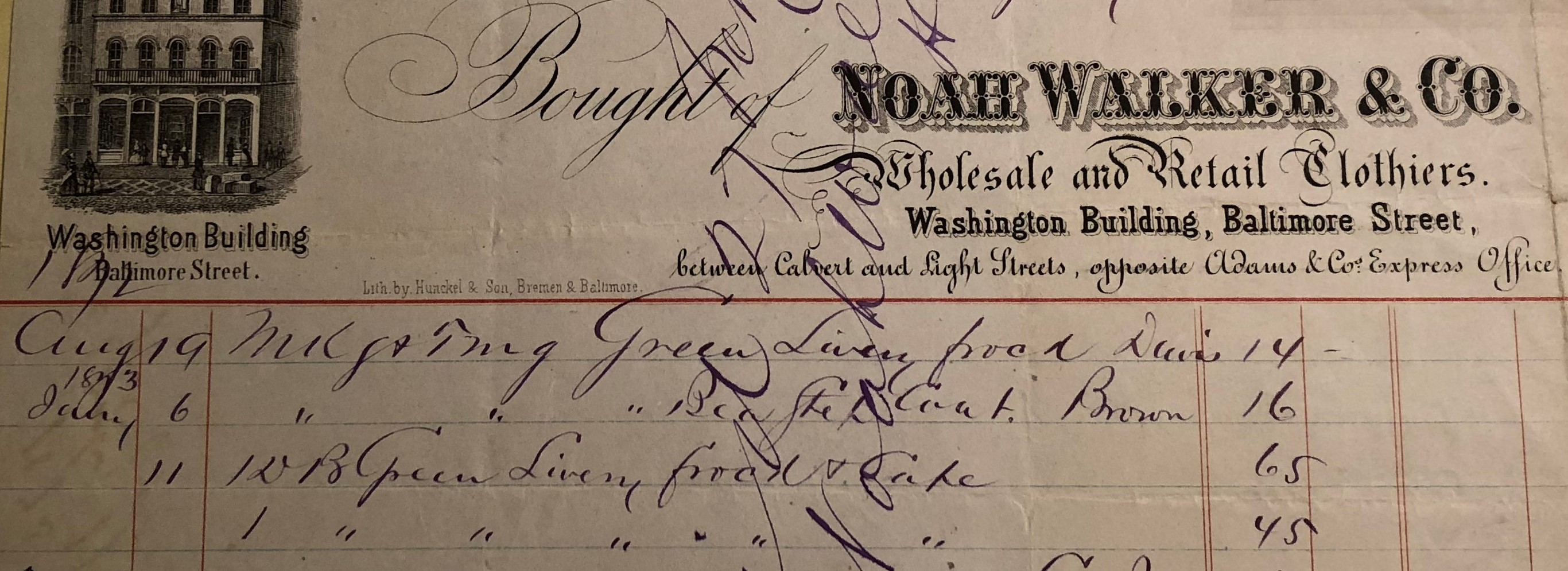
Maryland Historical Society, MS 2891, Hoyt Collection of Ridgley Papers, Hampton Bills, Clothing
Quite a handsome sum to be worn on the backs of the coachmen.
1.James McHenry Howard, Memoirs of the Ridgely’s of Hampton (with notes and additions by Helen West Ridgely nee Stewart) HAMP 21686 folder 2720.019 (p223)
New Call-to-action

